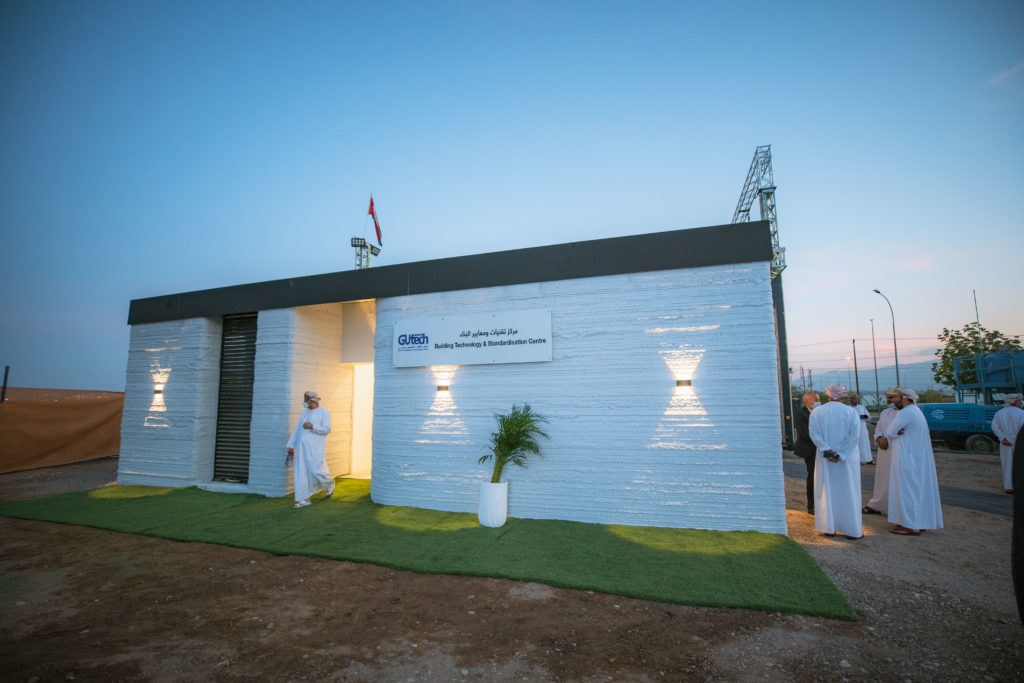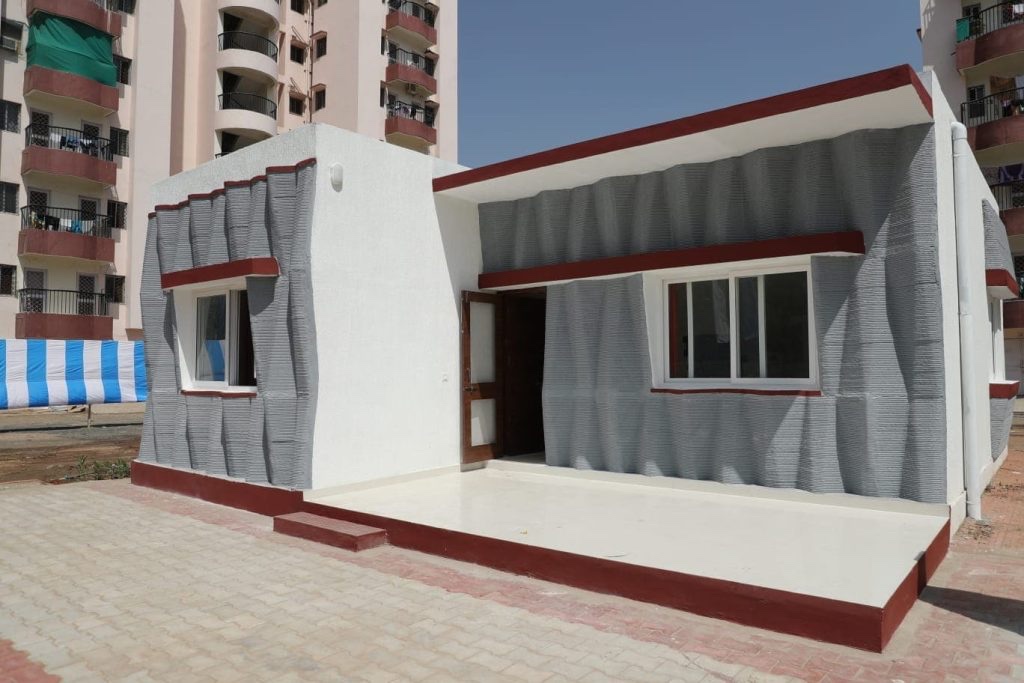The World Bank predicted 1.6 billion people will be affected by the global housing shortage by 2025. Yet, there’s one technology that brings opportunity to address this issue and is quickly gaining governmental attention.
The global 3D construction printing (3DCP) market size was worth $10.94 million in 2021 with expectations to grow at a CAGR of 101% between 2022 and 2030, according to Straits Research. Layering concrete, polymer, metal, or other materials back and forth using a robotic arm, the printers can access hard to reach locations where housing and labor are also in short supply.
3DCP has arrived just in time to provide quick structures that keep the sun off heads, the strain off workers, and the pressure off the environment. Let’s take a closer look at the top five factors influencing 3DCP’s growth rate.
1. Savings: Speed and Economic Benefits
3DCP enables rapid construction by depositing materials layer by layer, reducing the time required for traditional construction methods. This speed is especially valuable for projects with tight deadlines or emergency situations, such as disaster relief housing.
Take Power2Build, for example. They printed Angola’s first 3D printed building. The total cost of the material for the concrete walls was less than $1,000 USD. Moreover, this construction project is considered the beginning of the 3D printing construction revolution and the first ever 3DCP home.
The Americas are also seeing 3DCP’s promise: Project Virginia is an initiative to 3D print over 200 affordable homes within 3 years, starting in 2022. The project not only the 3D printing of houses, but also roads and the necessary utilities for the 3D printed houses. And just last year, the first 3D printing concrete solution was introduced in Mexico by leading building materials multinational Cemex and COBOD, world leaders in 3D construction printing solutions.
While the initial setup and investment costs for 3DCP technology can be intensive, it often leads to long-term cost savings because of reduced labor costs, minimized material wastage, and optimized construction processes that all contribute to overall budget efficiency.
2. Design Freedom and Complexity
From cute urban cabins to solar-powered homes, 3DCP allows for intricate, complex, and practical architectural designs that challenge conventional thinking in construction. This design freedom opens up new possibilities for innovative and unique structures.
Architects can also get creative with how these constructions are printed. 3DCP enables components to be prefabricated off-site and assembled on-site, reducing in situ labor and construction time, which is particularly valuable in scenarios where project managers must tailor construction according to specific time constraints or ground preparation.
The idea is that with increased 3DCP and design software, engineers can have more control over their work. They can program and calculate material durability, printing speed, and the costs involved in transportation, enabling more efficient yet creative building processes.
3. Sustainability and Material Efficiency
It’s no surprise that the construction industry is under increasing pressure to reduce its environmental impact and become more sustainable across its entire value chain. 3DCP allows for more precision in material usage, which minimizes waste, and is compatible with eco-friendly material alternatives.
The revolutionary construction material, D.fab, is just one alternative building material example that delivers the durability of conventional concrete with a CO2 footprint 1.5 times lower than mortars typically used in 3DCP. With additive layer manufacturing, construction workers only print exactly what is necessary, reducing waste of initially expensive materials.
Similarly, Mighty’s synthetic Light Stone is a fast-curing polymer composite composed of 60% recycled elements and 99% less waste compared to traditional methods.
Both substances are strong enough to support their own weight when printing horizontal lines and solidify when exposed to UV light to create safe, weather-resistant structures.
Ongoing research and development in 3DCP is leading to the refinement of techniques and the development of new materials suitable for construction. As technology advances, the cost-effectiveness, efficiency, and reliability of 3DCP will improve further.
4. Labor Shortages and Safety
Associated Builders and Contractors (ABC) says the construction workforce shortage topped half a million in 2023. 3DCP addresses labor constraints by automating construction tasks and reducing the need for manual labor in hazardous environments. This can enhance worker safety while also mitigating the impact of labor shortages.
Japan has already built emergency housing models in less than 24 hours, costing under 3 million yen (around $20,520) with little to no construction crew. Tvasta Manufacturing Solutions writes in their blog that, “a standard 3D printer can produce a 2,000-sq ft home in less than a week, which is 1/8th of the total time spent today in erecting a functioning house.” By increasing efficiency and decreasing the amount of time required onsite, 3DCP eases the demand for large construction teams on site and for long periods.
Out of every five retiring general contractors, only one is entering the field. 3DCP fosters a safer workplace with predictable hours as employees have the option to work in enclosed facilities when weather conditions are poor, enabling better working conditions.
Additionally, work can be localized. Traditional and rigid construction methods avert regulatory approval in remote or harsh environments, such as disaster-stricken areas or areas prone to landslides. 3DCP technology can create habitats, shelters, or infrastructure in such conditions with fewer employees on a building site.
5. Regulatory Standards and Public Acceptance
As the adoption of 3DCP grows, regulatory bodies and industry standards are evolving to accommodate this new technology. Clearer guidelines and standards can provide a framework that fosters trust and confidence in 3D-printed construction.
However, figuring out how to evaluate these buildings is the biggest challenge. There will be strong pressure for approval of 3D-printed structures due to affordability and environmental housing requirements. While more information on evaluating this technology in codes and standards is needed, organizations like NFPA, the International Code Council, and UL can help. UL has already released a framework proposal for evaluating and approving 3D-printed buildings.
As more 3DCP projects gain attention and visibility, acceptance, and funding to support this technology is increasing. These positive perceptions and successful case studies will contribute to a broader cultural shift toward embracing innovative construction methods.
About the Author
Ibon Iribar, Investment & Open Innovation Advisor at CEMEX Ventures, deeply explores and analyses advanced technologies for the construction industry and helps identify investment and business development opportunities with new startups, projects, and entities of the construction technology ecosystem across multiple markets. Ibon leads the efforts for the biggest challenge for construction startups, Construction Startup Competition, and works year-round seeking the most innovative and promising solutions to invest in or collaborate with, supporting startups´ development and their growth within the built environment.
Subscribe to Our Email Newsletter
Stay up-to-date on all the latest news from the 3D printing industry and receive information and offers from third party vendors.
You May Also Like
Further Understanding of 3D Printing Design at ADDITIV Design World
ADDITIV is back once again! This time, the virtual platform for additive manufacturing will be holding the first-ever edition of ADDITIV Design World on May 23rd from 9:00 AM –...
3D Printer Maker EVO-tech Reborn as NEVO3D — Once More With Feeling
EVO-tech was a 3D printing service and original equipment manufacturer established in 2013 and based in Schörfling am Attersee, Austria. The company produced high-quality material extrusion systems featuring linear bearings,...
3D Systems Brings 3D Printed PEEK Cranial Implant to the U.S. with FDA Clearance
For more than 10 years, 3D Systems (NYSE:DDD) has worked hand-in-hand with surgeons to plan over 150,000 patient-specific cases, and develop more than two million instruments and implants from its...
CDFAM Returns to Berlin for Second Annual Symposium
The second CDFAM Computational Design Symposium is scheduled for May 7-8, 2024, in Berlin, and will convene leading experts in computational design across all scales. Building upon the first event...

































